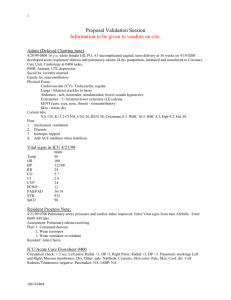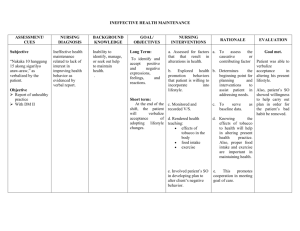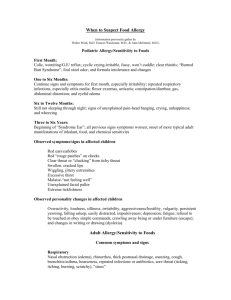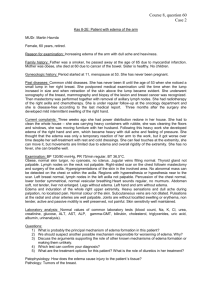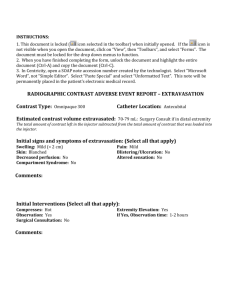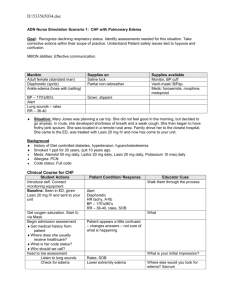EDEMA What is it? Edema is swelling in parts of the body, usually in
advertisement
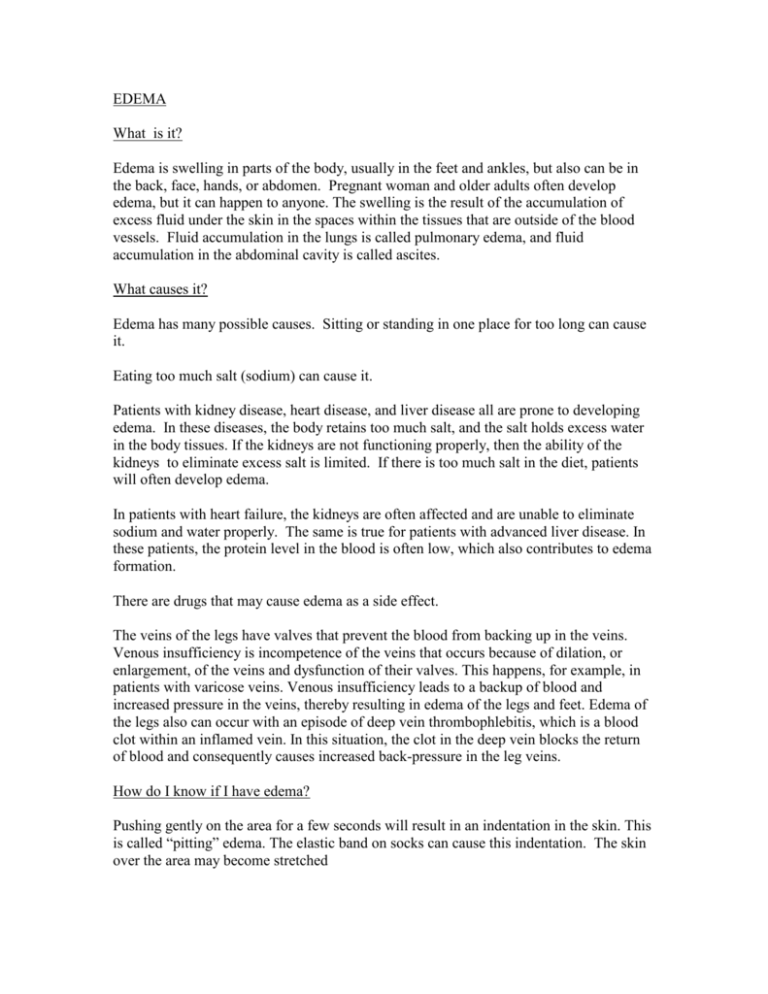
EDEMA What is it? Edema is swelling in parts of the body, usually in the feet and ankles, but also can be in the back, face, hands, or abdomen. Pregnant woman and older adults often develop edema, but it can happen to anyone. The swelling is the result of the accumulation of excess fluid under the skin in the spaces within the tissues that are outside of the blood vessels. Fluid accumulation in the lungs is called pulmonary edema, and fluid accumulation in the abdominal cavity is called ascites. What causes it? Edema has many possible causes. Sitting or standing in one place for too long can cause it. Eating too much salt (sodium) can cause it. Patients with kidney disease, heart disease, and liver disease all are prone to developing edema. In these diseases, the body retains too much salt, and the salt holds excess water in the body tissues. If the kidneys are not functioning properly, then the ability of the kidneys to eliminate excess salt is limited. If there is too much salt in the diet, patients will often develop edema. In patients with heart failure, the kidneys are often affected and are unable to eliminate sodium and water properly. The same is true for patients with advanced liver disease. In these patients, the protein level in the blood is often low, which also contributes to edema formation. There are drugs that may cause edema as a side effect. The veins of the legs have valves that prevent the blood from backing up in the veins. Venous insufficiency is incompetence of the veins that occurs because of dilation, or enlargement, of the veins and dysfunction of their valves. This happens, for example, in patients with varicose veins. Venous insufficiency leads to a backup of blood and increased pressure in the veins, thereby resulting in edema of the legs and feet. Edema of the legs also can occur with an episode of deep vein thrombophlebitis, which is a blood clot within an inflamed vein. In this situation, the clot in the deep vein blocks the return of blood and consequently causes increased back-pressure in the leg veins. How do I know if I have edema? Pushing gently on the area for a few seconds will result in an indentation in the skin. This is called “pitting” edema. The elastic band on socks can cause this indentation. The skin over the area may become stretched How is Edema Treated? Decreasing salt, or sodium, intake is frequently an essential component of the treatment. Your doctor may prescribe a diuretic, or water pill, to treat the edema. Diuretics work by increasing the amount of sodium that the kidneys can eliminate. This leads to increased water excretion. The more common diuretics used are furosemide (or lasix), and hydrochlorothiazide (HCTZ).There are several others, including spironolactone (Aldactone), bumetanide (Bumex) and others. They all work by helping the kidneys to eliminate the excess sodium and water. If a diuretic is taken and there is not a reduction in the edema, your doctor may increase the dose, or add a second type of diuretic. Patients taking diuretics need to have their electrolytes (such as the sodium and potassium levels) checked periodically. If you notice an increase in, or the development of, your edema, or of course if you develop shortness of breath at any time, we recommend that you contact your nephrologist or primary care physician for advice.

